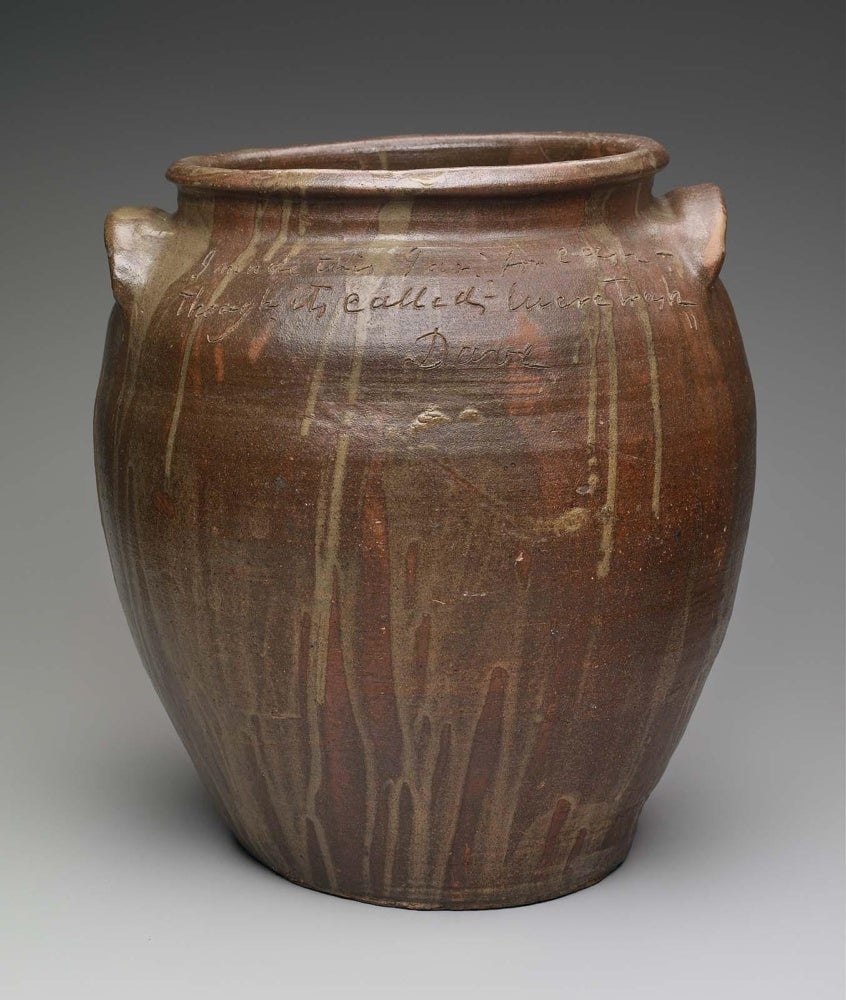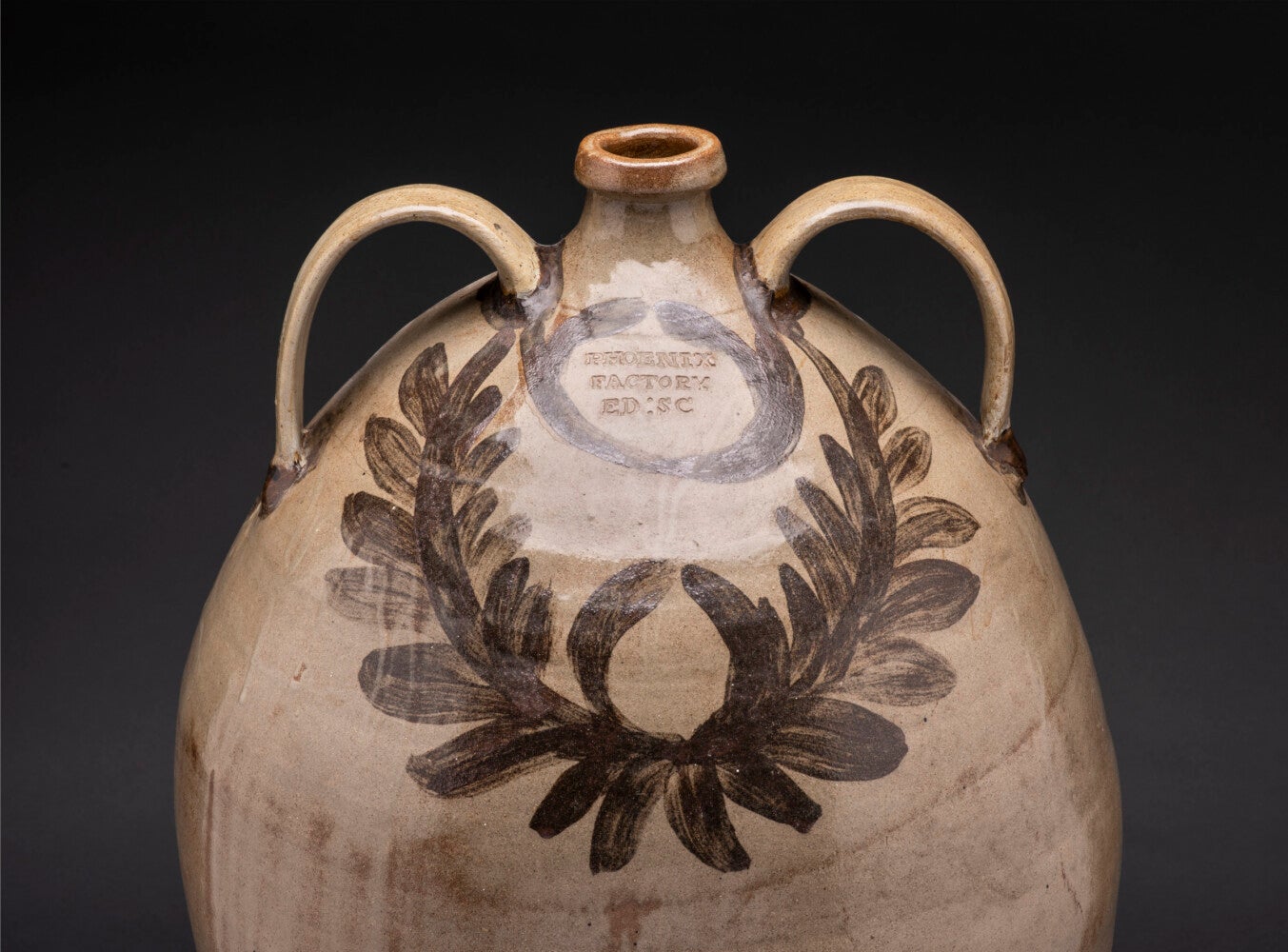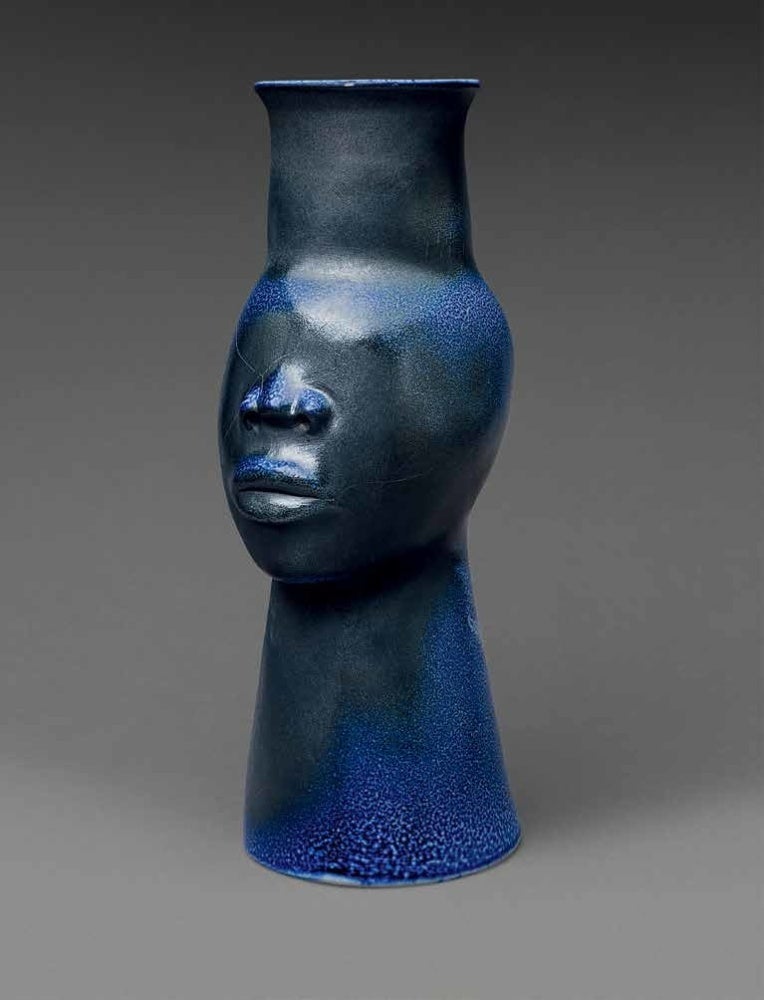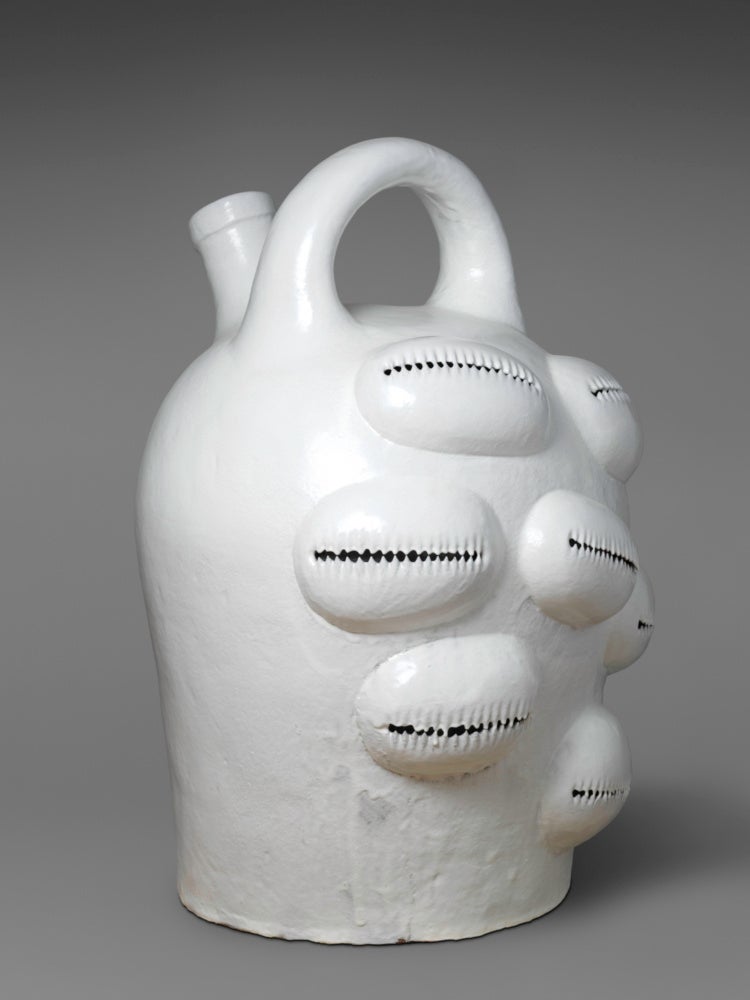
When the exhibition, Hear Me Now: The Black Potters of Old Edgefield, South Carolina, began its run at the Metropolitan Museum of Art, it was likely the first time many people in the northeast had considered the narratives embedded within the stoneware production of Old Edgefield District, the center for American ceramic creation before the Civil War. The High Museum of Art in Atlanta, The Charleston Museum, Greenville County Museum of Art, Mckissick Museum, and South Carolina State Museum brought this story to life via objects from their permanent collections.
So, why did the High need to bring this exhibition south? There is regional relevance and proximity to historical context, but this is also an opportunity for historical accountability. Slavery in America has traditionally been perceived as predominantly agricultural, the majority of the enslaved people laboring in the cultivation of cash crops (cotton or tobacco fields). Sometimes the artistic merits of the many churns, storage jars, pitchers, bowls, and jugs are noted, but rarely is the industrial scale in which these products were produced highlighted.
The exhibit’s focal point is the work of Dave (later recorded as David Drake), a potter born into slavery around 1801 in South Carolina. Dave became exceptional not only for his craftsmanship but also for his ability to read and write—in a time when literacy among enslaved people was forbidden. He is best known for the large storage jars he crafted, some capable of holding over forty gallons. What truly set Dave apart was the elegant cursive inscriptions he carved into his pots, ranging from poetic verses to simple, poignant reflections on his life and times. One such jar, inscribed with the date 1858, spoke of the symbolism and cruelty of selling enslaved people on New Year’s Day. He wrote: “nineteen days before Christmas—Eve— / Lots of people after its over, how they will greave.” The beginning of the year was a time for owners of enslaved people to settle debts and manage financial affairs by buying, selling, or leasing slaves, often causing deep fear among enslaved people and suddenly stripped of family connections. Dave employed rhyme to contrast the festive spirit of Christmas with the looming sorrow that follows.

Dave’s jars are contextualized alongside other ceramic objects, including face vessels and utilitarian wares, many by unknown artists. These pieces, crafted under cruel conditions, represent a blend of skill, resilience, and silent resistance. In an exhibition of stunning works of art, it was odd to be focused on a didactic image. Besides a case with four shards from broken vessels, the curators included a recent photo taken on private land in Edgefield. In the image, uneven ground strewn with the remnants of shattered ceramics in muted earth tones and faded glazes. Pottery production had escalated to an industrial level, necessitating substantial capital and resources to maintain it. This ceramic graveyard shows the economic, industrial, political, social, and artistic developments in the nineteenth century. As the trail of broken ceramics extend beyond the image, one can almost see the wagon roads, waterways, and the Charleston-Hamburg Railroad, which helped transport stoneware as far as 150 miles away.

One of my favorite works is a storage jar from an Unrecorded potter, possibly from the Phoenix Stone Ware Factory or Collin Rhodes Factory, ca. 1840-53, which features both brushed iron slip and slip-trailed kaolin decoration on each side. The back side depicts a stylized silhouette of a peony in bloom with open petals, bringing the jar a sense of elegance and sophistication, suggesting it could have served practical purposes or acted as a decorative piece in a middle-class Southern home. On the other side, we see the profile of a man in uniform, either military or formal dress, animated by his distinctive posture, fluid movement, expressive wide eye and button ear, and mouth open in a toothy grin, the details piped onto the vessel’s surface like icing on a cake. This decoration is particularly intriguing because there are so few instances in early nineteenth century American history where African Americans or enslaved individuals are depicted in artistic works, making the prominent depiction of this individual exceptionally notable as it counters the widespread historical invisibility and marginalization of African Americans.
The exhibition attempts to bridge past and present by featuring contemporary works by artists like Theaster Gates, Adebunmi Gbadebo, Simone Leigh, and Woody De Othello, each of whom draws direct inspiration from the legacy of Edgefield’s potters. In this fourth iteration of the installation of the exhibition, the curators create a dialogue across the centuries, providing the platform for these conversations to happen side-by-side, as opposed to in jarring jumps. The installation at the High sets the tone immediately with a Storage jar by Drake and Baddler, Stony Bluff Manufactory, 1859, placed directly beside Woody De Othello’s vessel Secrets Safe, 2022. The work, covered in ears, represents the collective listening that needs to happen throughout the exhibition. Due to its closeness to the Drake, it signifies heeding historical echoes and spiritual communication.
This is not just an exhibition; it is an act of reclamation and remembrance, urging a reassessment of history and artistry through pottery.
Later in the exhibition, viewers are greeted by Simone Leigh’s epic Large Jug, 2022. The jug’s surface is finished with a rich white slip, in direct contrast to the earthy face jug ca. 1850-1880, which sits nearby and is a direct reference for Leigh’s work. Leigh’s vessel is covered in cowrie shells, symbols of womanhood, fertility, birth, and wealth. Still, it is also informed by the expressive facial features of old face jugs, including their prominently displayed teeth. While the shells have this serrated edge, the face jugs bare their teeth in either a grimace or a smile, each representing protection.
In its first incarnation, the exhibition was hindered by the spatial constraints of the Met’s Lehman Wing. In Atlanta, with the most square footage of any stop on the tour, the exhibition encourages a deeper exploration and understanding of the complexities of American history, particularly Southern history, through the lens of art and craftsmanship. This is not just an exhibition; it is an act of reclamation and remembrance, urging a reassessment of history and artistry through pottery.





